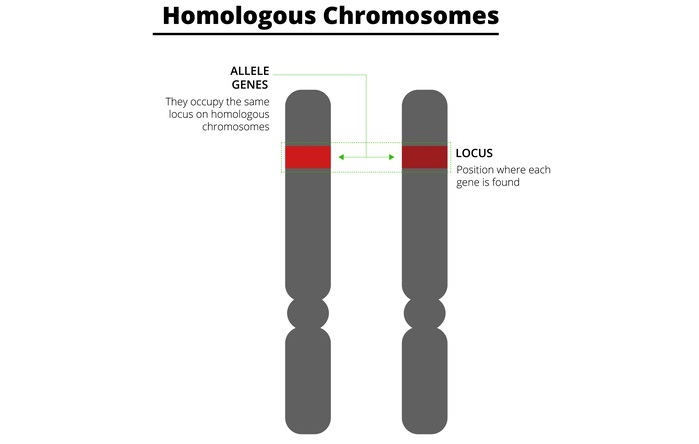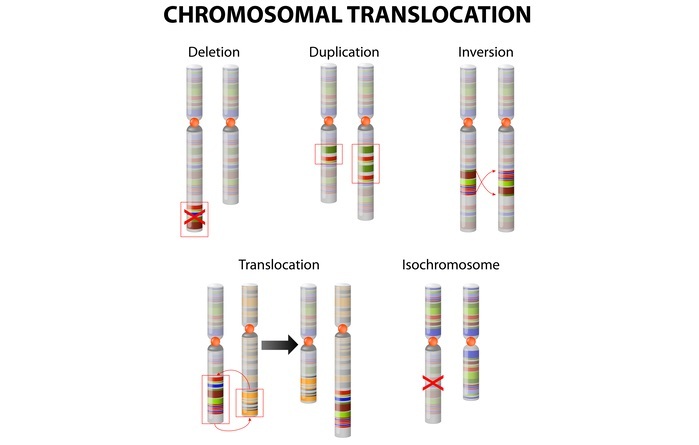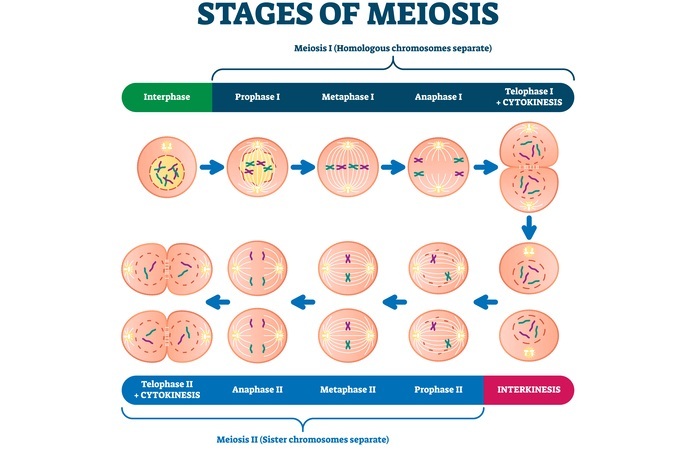
 Data Structure
Data Structure Networking
Networking RDBMS
RDBMS Operating System
Operating System Java
Java MS Excel
MS Excel iOS
iOS HTML
HTML CSS
CSS Android
Android Python
Python C Programming
C Programming C++
C++ C#
C# MongoDB
MongoDB MySQL
MySQL Javascript
Javascript PHP
PHP
- Selected Reading
- UPSC IAS Exams Notes
- Developer's Best Practices
- Questions and Answers
- Effective Resume Writing
- HR Interview Questions
- Computer Glossary
- Who is Who
What Are Symmetric and Asymmetric Hybrids
Introduction
Symmetric hybrids are chromosomes that have a balanced distribution of genetic information between two homologous chromosomes. Homologous chromosomes are a pair of chromosomes that carry the same genes, but they may carry different alleles (variations) of those genes.
In symmetric hybrids, the genetic information on both chromosomes is equally shared between them. This means that the chromosomes are identical in terms of their genetic content.

Asymmetric hybrids, on the other hand, are chromosomes that have an unbalanced distribution of genetic information between two homologous chromosomes. In this case, one of the chromosomes has more genetic material than the other.
Asymmetric hybrids are common in plants, where they can arise due to the fusion of two different species of plants. In these cases, one of the chromosomes may be derived from one species, while the other is derived from another species. Chromosomes are the fundamental units of inheritance and play a crucial role in the transfer of genetic information from one generation to another.
They contain DNA, the genetic material, which encodes the instructions for the development, growth, and reproduction of an organism. However, not all chromosomes are created equal. Some chromosomes are symmetrical, while others are asymmetrical. Given below are few examples of the same.
Examples of Symmetric Hybrids
One example of symmetric hybrids is the human chromosome pair 1. This chromosome pair is the largest and carries more genetic material than any other human chromosome. It is also the only chromosome pair that has not undergone any fusion events during evolution. This means that both homologous chromosomes in this pair are identical in terms of their genetic content.
Another example of symmetric hybrids is the chromosome pair 2 in chimpanzees. The chimpanzee genome has 24 pairs of chromosomes, while humans have 23 pairs.
However, chromosome pair 2 in chimpanzees is actually a fusion of two ancestral chromosomes that are separate in humans. This means that the human chromosomes that correspond to chimpanzee chromosome pair 2 are symmetric hybrids, as they carry the genetic information of both ancestral chromosomes.
Examples Of Asymmetric Hybrids
Asymmetric hybrids are more common in plants than in animals. One example of asymmetric hybrids is the wheat chromosome 1B. Wheat is a polyploid plant, which means that it has multiple sets of chromosomes. The wheat genome is composed of three sets of chromosomes, and each set has seven pairs of chromosomes.

The wheat chromosome 1B is an asymmetric hybrid that arose from the fusion of two different ancestral chromosomes. One of the ancestral chromosomes carried a gene for resistance to a fungal disease, while the other did not. As a result, the wheat chromosome 1B carries two copies of the resistance gene, while the other wheat chromosomes only carry one copy.
Another example of asymmetric hybrids is the maize chromosome 9. Maize is another polyploid plant, and its genome is composed of two sets of chromosomes. Maize chromosome 9 is an asymmetric hybrid that arose from the fusion of two ancestral chromosomes.
One of the ancestral chromosomes carried a gene for resistance to a fungal disease, while the other carried a gene for tolerance to an herbicide. As a result, the maize chromosome 9 carries both genes, making it resistant to both the fungal disease and the herbicide.
How Do Symmetric and Asymmetric Hybrids Arise?
Symmetric and asymmetric hybrids can arise in different ways, depending on the organism and the circumstances. In general, symmetric hybrids arise from normal meiosis, the process by which sex cells (gametes) are produced.

During meiosis, the chromosomes in a cell replicate and then divide twice, producing four daughter cells that each contain half the number of chromosomes as the parent cell. This process ensures that the genetic material is equally distributed between the daughter cells, resulting in symmetric hybrids.
Asymmetric hybrids, on the other hand, can arise from several different processes. One common way that asymmetric hybrids arise is through chromosomal rearrangements, such as fusions or translocations. These rearrangements can result in the merging of two different chromosomes, leading to an unbalanced distribution of genetic material between the resulting chromosomes.
Asymmetric hybrids can also arise from hybridization events between different species. When two different species mates, their chromosomes may not match up perfectly, leading to an unbalanced distribution of genetic material in the resulting hybrids.
The Role of Symmetric and Asymmetric Hybrids in Evolution
Symmetric and asymmetric hybrids play important roles in the evolution of organisms. Symmetric hybrids can help maintain genetic diversity within populations by ensuring that both homologous chromosomes are equally represented.
This can be particularly important for genes that are subject to random mutations or genetic drift, as it ensures that the mutations are not lost from the population. Asymmetric hybrids, on the other hand, can lead to the creation of new genetic combinations that may provide a selective advantage in certain environments.
For example, if one chromosome in an asymmetric hybrid carries a gene for resistance to a disease and the other chromosome carries a gene for tolerance to an herbicide, the resulting hybrid may be resistant to both the disease and the herbicide. This can provide a selective advantage in environments where both the disease and the herbicide are present.
Conclusion
In conclusion, symmetric and asymmetric hybrids are two types of chromosomes that differ in their distribution of genetic material. Symmetric hybrids have a balanced distribution of genetic information between two homologous chromosomes, while asymmetric hybrids have an unbalanced distribution of genetic information.
While symmetric hybrids are more common in animals, asymmetric hybrids are more common in plants and can arise from chromosomal rearrangements or hybridization events.
Both symmetric and asymmetric hybrids play important roles in the evolution of organisms by maintaining genetic diversity and creating new genetic combinations that can provide a selective advantage in certain environments.

